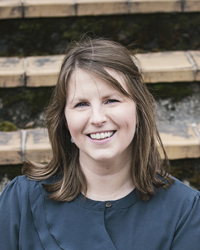Assessment of video in general practice
The possibility of videoconferencing in general practice currently exists in fewer practices than what is ideal, and the practices that have videoconferencing equipment most often use it for interpreting conversations.
PROJECT PERIOD
Start: June 2019
End: March 2020
(The assessment took place during this period.
The project itself lasted from December 2018
until March 2020).
It had been a desire for a long time to have a common solution for video consultations for general practice, and the purpose of the project was then to test MedCom’s video client (Pexip) in a number of areas in general medical practice, for example for video consultations with patients or for video conferencing with municipalities, hospitals or nursing homes.
AIM
The assessment of the project was carried out by HTA consultants in CIMT and aimed to gather the experience of using video in general practice among practitioners, patients and other collaborating partners. The assessment should also collect information that may form the basis for designing a future business case.
A questionnaire study was conducted among patients who, during the project period, tried out video consultation with their practitioner, and a total of 5 group interviews with practitioners were held.
RESULTS
The primary conclusion of the assessments was that the practitioners would not recommend video consultations at the given time. It would require a more efficient video resolution than the one tested in this project.
Furthermore, the assessment laid out the following:
- It is a requisite for good video conversation that the patient and the practitioner know each other in advance and have developed a relationship.
- Video consultations are unfit for illnesses that require objective examination, patients that need measurements or testing and patients with very complex problems or patients who are not cognitive well-functioning.
- The lack of closeness and contact with the patient did not oppose a problem in the instances where the video consultations were held.
- The practitioners do not agree on the time spent during a video consultation. Where some practitioners believe they use more time on video consultations, others believe that it will save time.
Generally, both practitioners and patients wished for the option to use video consultation, but the technology must work efficiently and be easier to use before it becomes usual practice.
FOLLOW-UP
When the corona pandemic hit the world shortly after the evaluation of this project, the project showed its significant value despite the criticism of the solution expressed by the doctors involved.
Thanks to the pilot project and the feedback from the evaluation, the app “MinLæge” – created for video consultations between patient and doctor – could be quickly adapted and upgraded for a national rollout when the country was hit by the pandemic and the subsequent lockdown.
PARTNERS
Partners included Danske Regioner, MedCom and Praktiserende Lægers Organisation.
EXTERNAL FUNDING
The project was funded by MedCom.

Anne Mette Ølholm
Head of Assessment
Centre for Innovative Medical Technology (CIMT). Odense University Hospital, Dept. of Clinical Development - Innovation, Research & HTA
(+45) 3046 0895 anne.mette.oelholm@rsyd.dk
